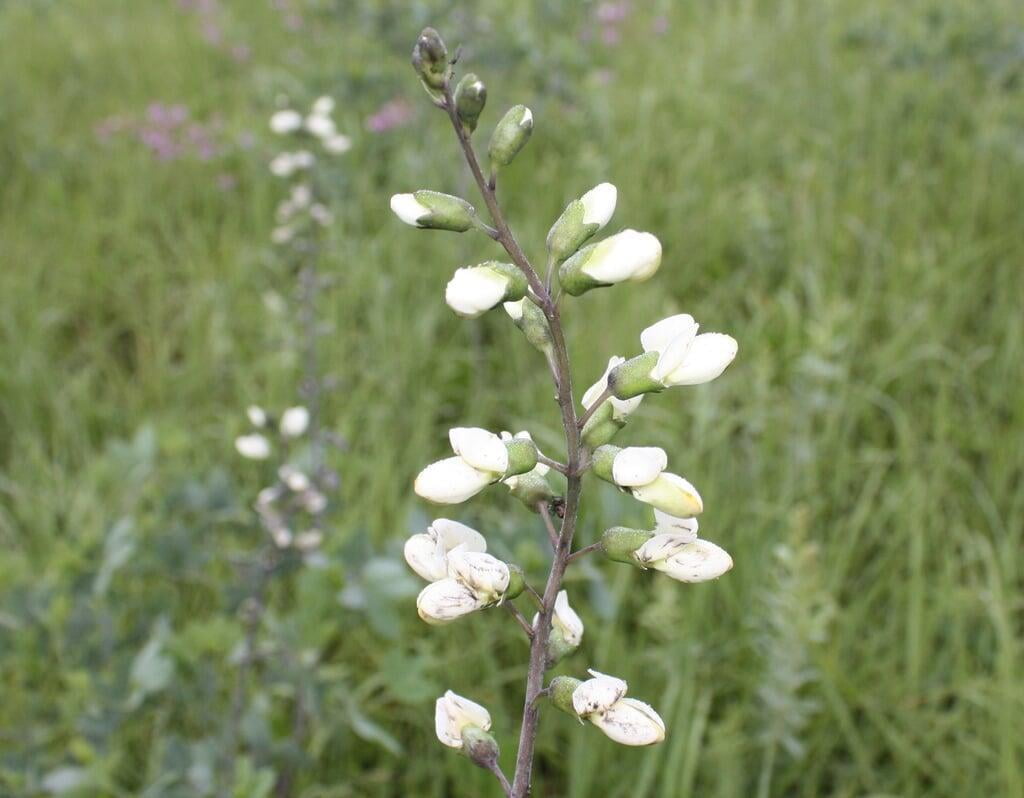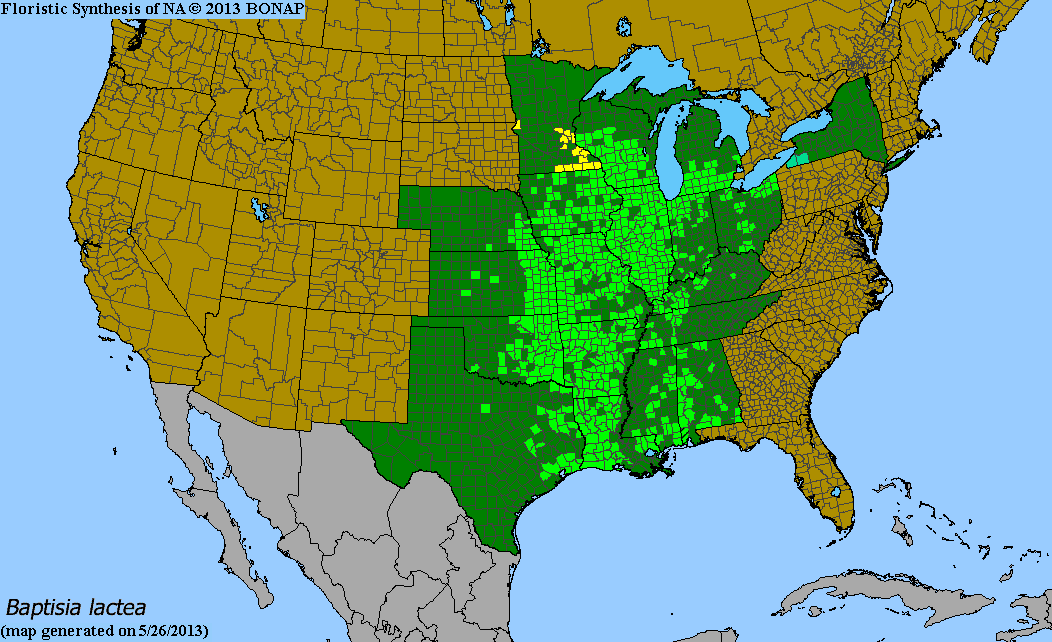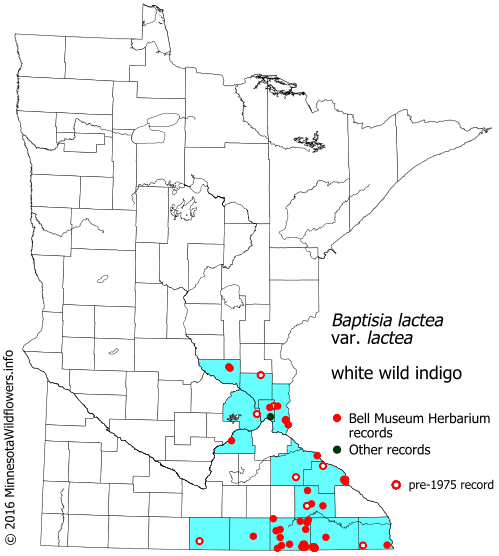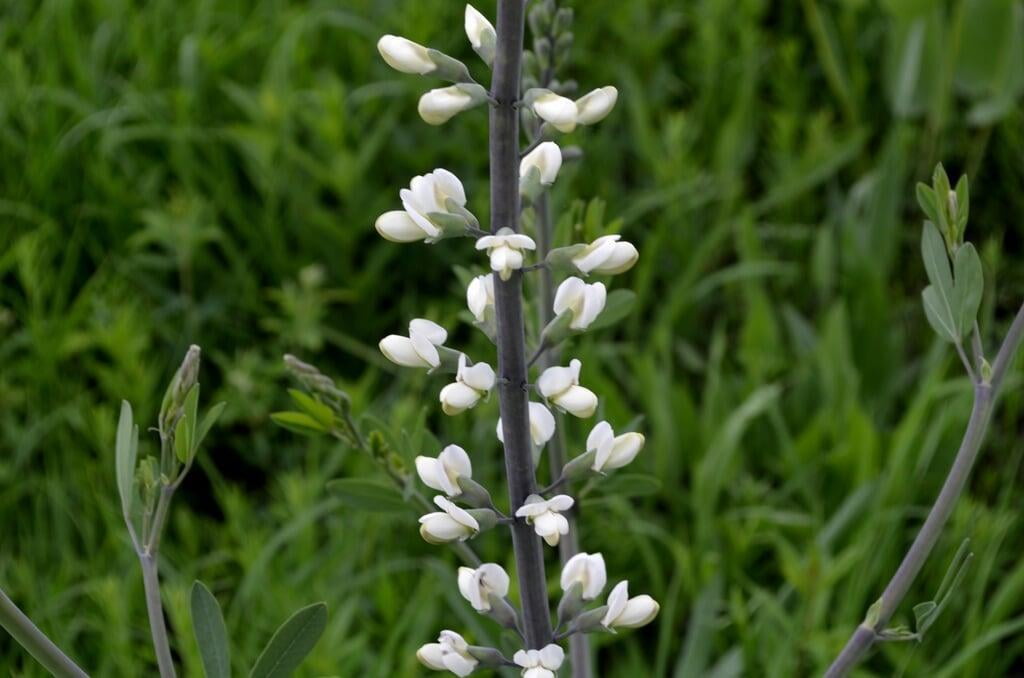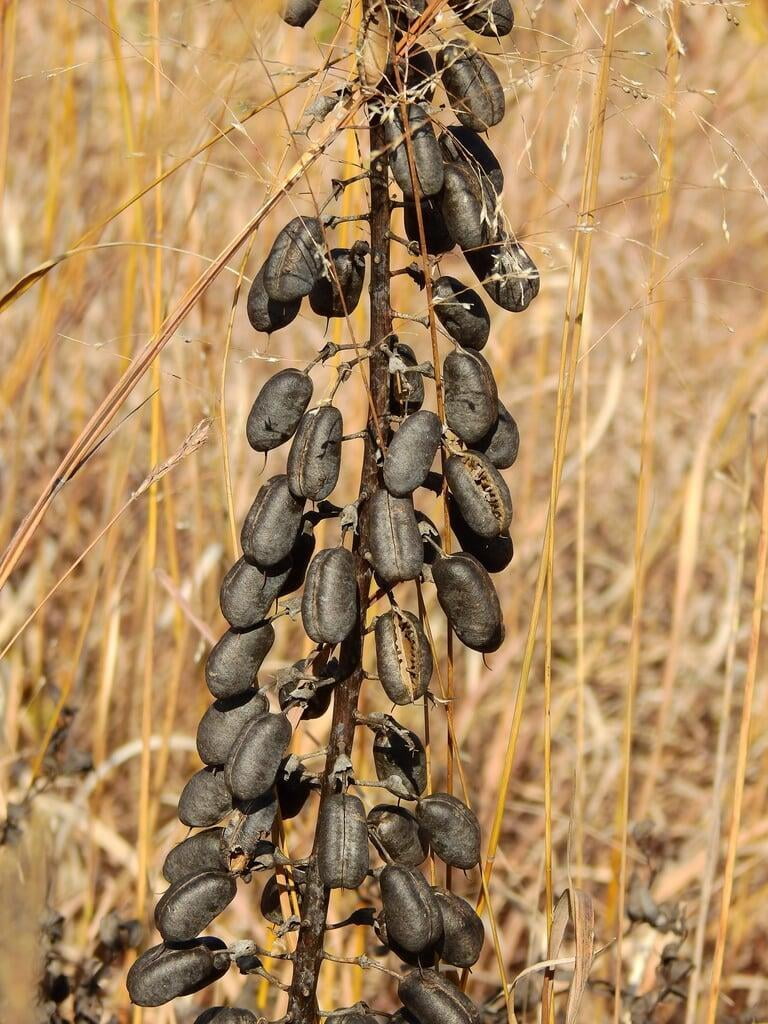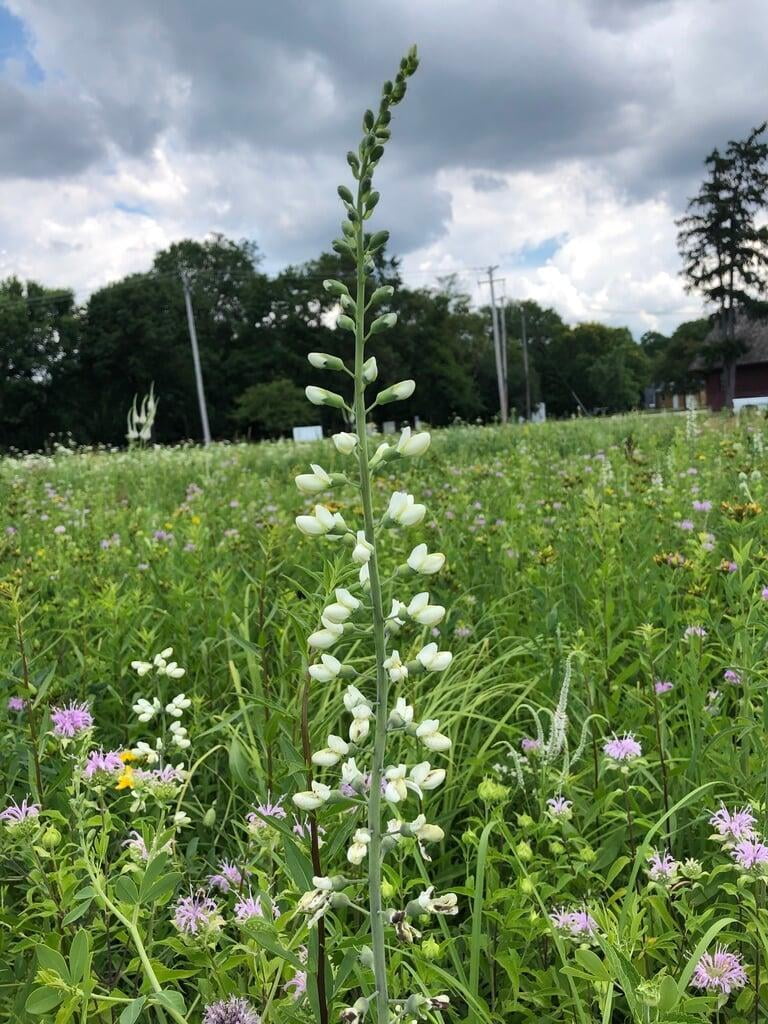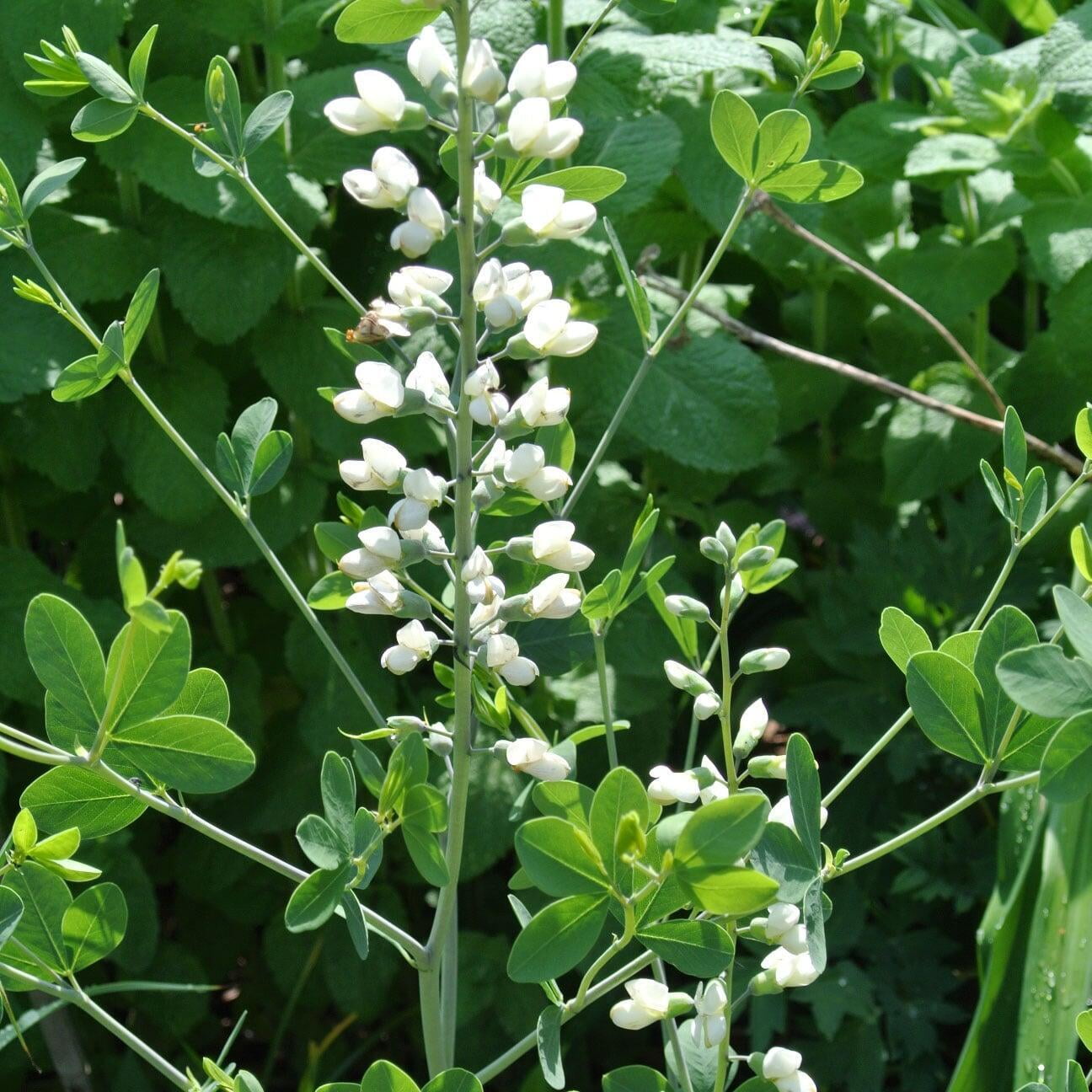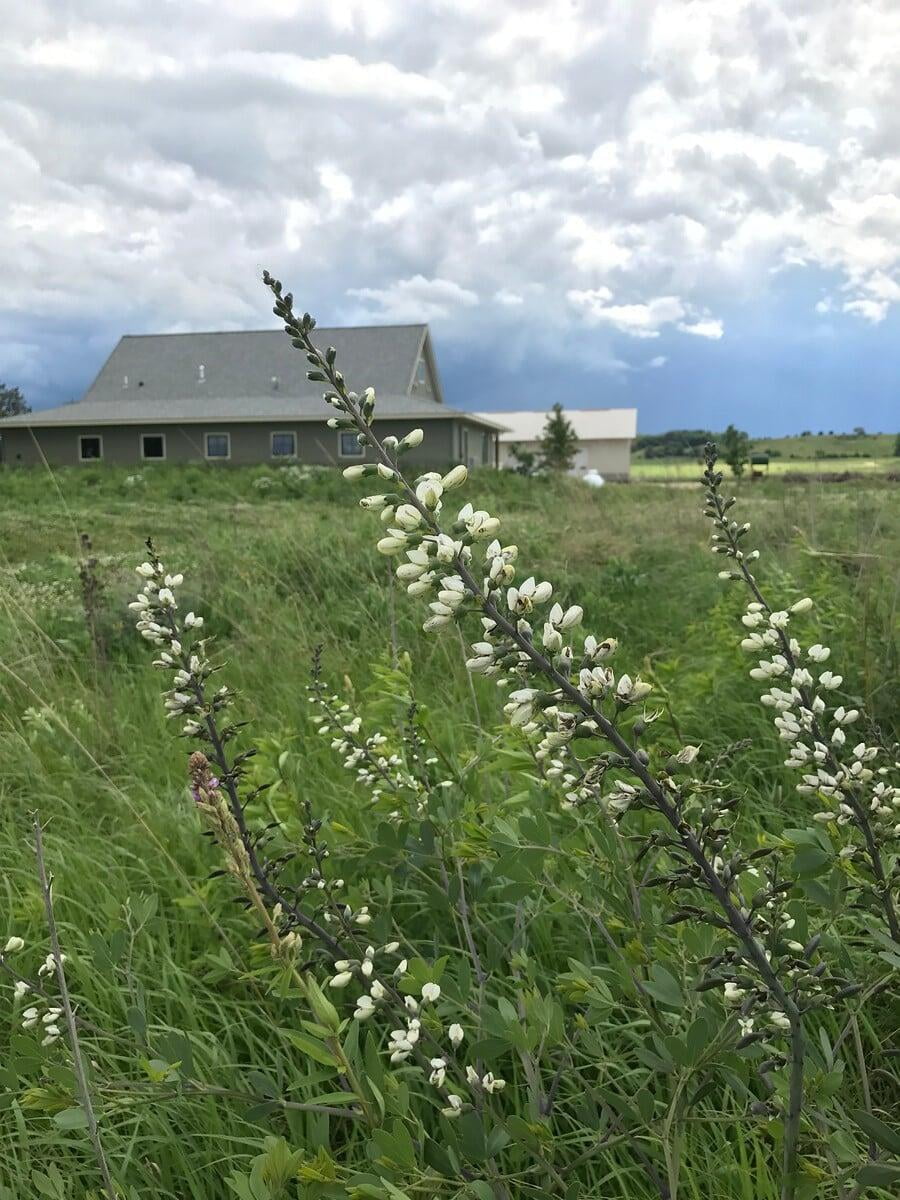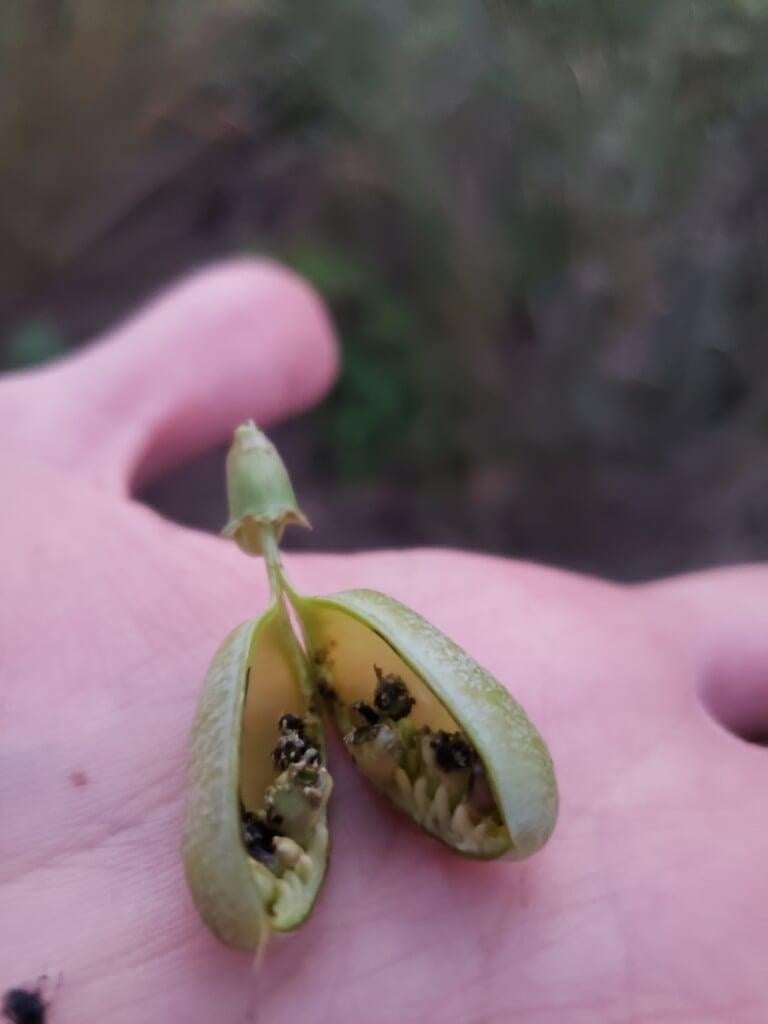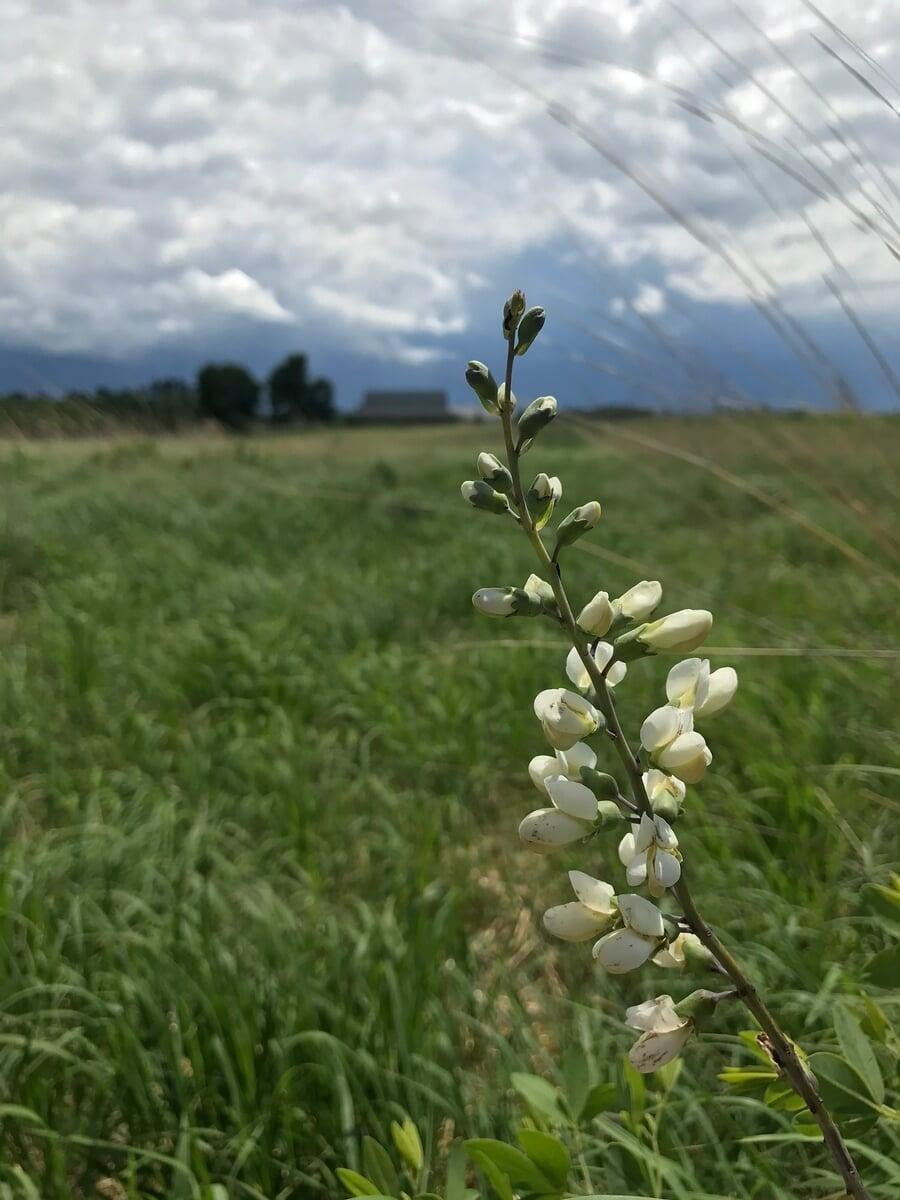Baptisia lactea
White wild indigo Description:
Baptisia lactea, commonly known as White Wild Indigo or White False Indigo, is a perennial herbaceous plant that is native to the central and eastern United States. It typically grows to a height of 3-4 feet (0.9-1.2 meters) and spreads to about 2-3 feet (0.6-0.9 meters) wide. The plant has a deep taproot and a branching root system, which makes it drought-tolerant and helps it stabilize soil.
The leaves of the Baptisia lactea plant are compound, measuring about 3-6 inches (7.6-15.2 cm) in length, and consist of three leaflets that are oval to elliptical in shape. The leaves are bluish-green in color and have a slightly waxy texture.
Baptisia lactea produces tall, upright spikes of white flowers from late spring to early summer. The flowers are pea-like in shape and are arranged in racemes at the top of the stem. They are followed by flattened, brown seed pods that can reach up to 2 inches (5 cm) in length. The plant is an important host plant for the larvae of several butterfly species, including the wild indigo duskywing and zarucco duskywing.
Overall, Baptisia lactea is an important plant for prairie restoration and is commonly used in landscaping as an ornamental plant. The plant is also known for its medicinal properties and has been used in traditional medicine for various ailments, including respiratory infections and skin disorders. Baptisia lactea is also a legume, which means it can fix atmospheric nitrogen and improve soil fertility.
Native Range:
White wild indigo has a smaller range in Minnesota than most of the plants we carry - it's native range is in a handful of counties in Southeastern portions of Minnesota. That aside, the plant can be found natively growing in most of the Midwest and Southward to Texas.
Standard Plant Information:
Plant Height: 2' - 4'
Bloom Time: May - July
Preferred Habitat: Does well in full sun. Often found in dry to average moisture prairies, savannas, and open woods.
Sowing:
For most homeowners, the best option is to scatter seed on the ground by hand broadcasting at a minimum of 16-64 pls ounces per acre. For even coverage, we recommend that you broadcast seed in perpendicular rows across the site to ensure even coverage.
You’ll want to broadcast any grass seed first, which will get raked into the soil lightly. Next, it is ideal to mulch the area lightly with either a clean (no seed) straw or preferably with our native Little Bluestem straw, sold at our retail garden centers. After a light mulching is complete, now it’s time to broadcast your native wildflower seeds, which should not be raked into the soil. A good rain or watering is sufficient to cover the seed.
Planting:
Simply dig a hole in the soil slightly larger than the plant’s roots. Ensure that the soil line of the plant is maintained during the transfer (i.e. the plant should be at the same level with the ground as it was in the pot). Pack any loose dirt back around the plant and make sure you water it well the same day to ensure it has the best chance of survival.

